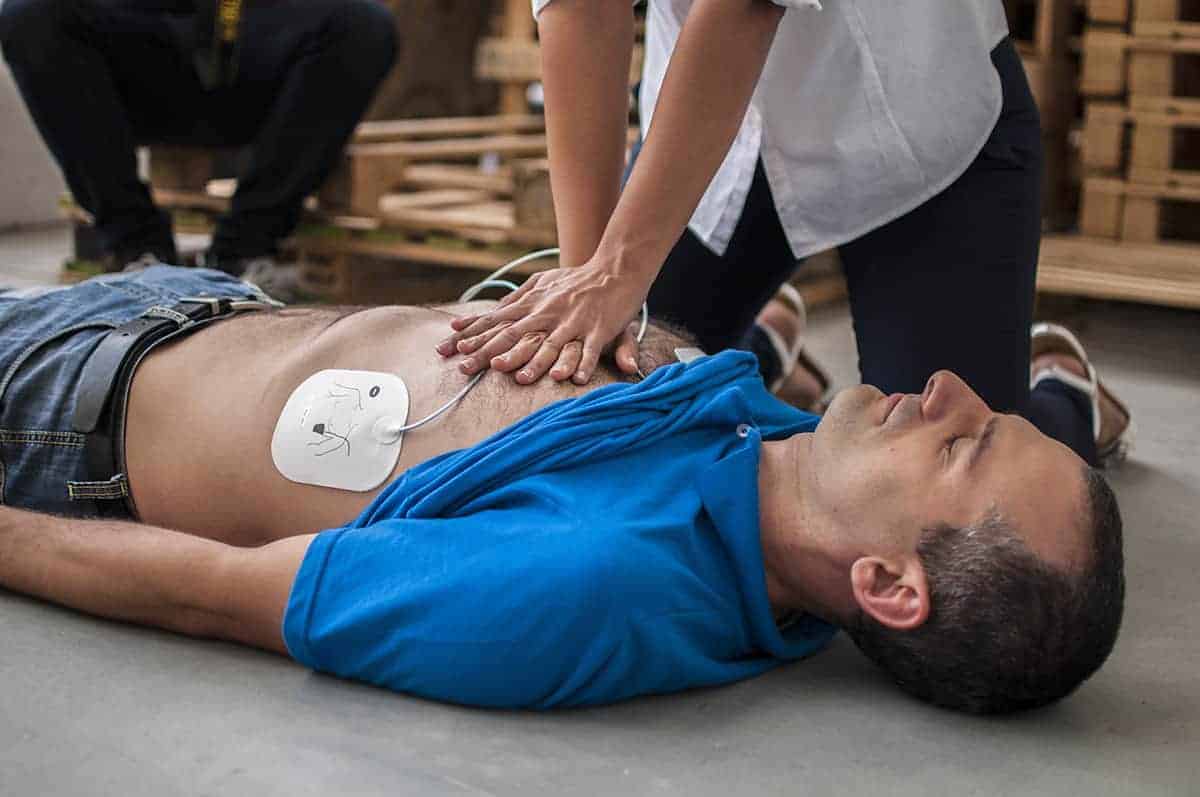
Women are less likely to survive a cardiac arrest
Estimated reading time: 4 minutes
Research published 22 May 2019 in the European Heart Journal reveals that women suffering a cardiac arrest are less likely to be resuscitated by bystanders, leading to decreased survival rates. Tragically, this mirrors the results of a 2018 study published in the Journal of the American Heart Association and others that have gone before.
Table of contents
“Heart Attack” or “Cardiac Arrest”?
While both conditions affect the same organ in the body, they are very different conditions. A heart attack affects the blood supply to the heart muscle (a “plumbing problem”). A cardiac arrest affects the electrical supply to the heart muscle (an “electrical problem”). Heart attacks can lead to cardiac arrest, so anyone suffering symptoms of a heart attack must go to hospital as soon as possible.
What the research says
The 2019 European study, led by cardiologist Dr Hanno Tan at the University of Amsterdam, found that “people did not recognise that women who collapsed were having a cardiac arrest, leading to delays in calling the emergency services and delays in providing resuscitation treatment.”
Dr Tan stated that “People may be less aware that cardiac arrest can occur as often in women as in men, and the women themselves may not recognise the urgency of their [heart attack] symptoms. Women may have symptoms of an impending heart attack that are less easy to interpret, such as fatigue, fainting, vomiting and neck or jaw pain, whereas men are more likely to report typical complaints such as chest pain.”
Ironically this difference in male-female heart attack symptoms was also discussed on the BBC Radio 2 Jeremy Vine radio show (May 2019).
What are the symptoms of a heart attack?
The NHS list typical symptoms of heart attacks as being:
- “chest pain – a feeling of pressure, heaviness, tightness or squeezing across your chest
- pain in other parts of the body – it can feel as if the pain is spreading from your chest to your arms (usually the left arm, but it can affect both arms), jaw, neck, back and tummy
- feeling light headed or dizzy
- sweating
- shortness of breath
- feeling sick (nausea) or being sick (vomiting)
- an overwhelming feeling of anxiety (similar to a panic attack)
- coughing or wheezing
The chest pain is often severe, but some people may only experience minor pain, similar to indigestion. While the most common symptom in both men and women is chest pain, women are more likely to have other symptoms such as shortness of breath, feeling or being sick and back or jaw pain.”
If you’ve attended one of our first aid courses, you’ll also have heard us discuss this while teaching the differences between heart attacks and cardiac arrests, as we’ve known about this for years.
It’s not new news folks!
Resuscitation Council UK
The Resuscitation Council UK stated in response to this latest report, that “it is essential that all symptoms are considered equally important in evaluating cardiac arrest – and intervention occurs as soon as possible to maximise chances of survival.”
“The Resuscitation Council (UK) knows that CPR saves lives, and we encourage people who witness a person who is unconscious and not breathing normally to take immediate action to intervene, irrespective of the gender of the casualty.”
Director of Public Affairs Danni Manzi said: “We hope that this new research empowers and encourages people to help save a life. Dialling 999, beginning chest compressions and accessing a defibrillator are key to giving a person their best chance of survival in a cardiac arrest, whoever and wherever they are.”
Our thoughts
The one thing to take away from this is that you shouldn’t delay immediate action. The faster you act, calling 999/112, commencing CPR & using an AED, the greater the casualties chance of survival.
You can learn how to recognise a cardiac arrest and provide CPR with one of our first aid courses;
- First Aid Courses for kids
- First Aid Courses for home
- First aid Courses for the workplace
- First aid courses for the outdoors
Our courses run regularly at our training centre in Cheshire. There’s also the option to hold private courses for your colleagues at your venues, nationwide. Please get in touch if you have a specific requirement not listed on our course page and we will do all we can to accommodate your requirements.


